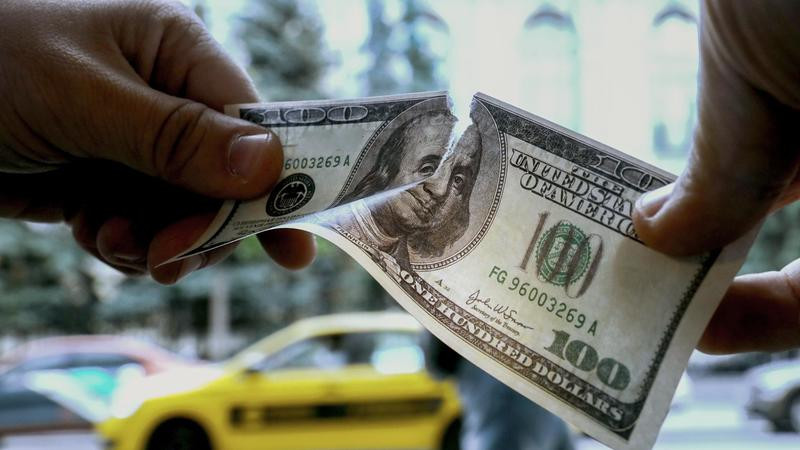
More recently, the US currency was predicted to see a significant rise and continued growth, despite the devastating consequences of the COVID-19 pandemic. However, many experts have now the opposite opinion, believing that the existing dollar's strength may be the first step towards weakening it.
At the beginning of this week, the US currency resumed its decline after a short-term rise recorded a week earlier. The weakening of the US currency occurred throughout the spectrum of the market, causing serious concern for investors. In the context of recent statements by US President Donald Trump, this looked surprising, since the head of the White House, despite threats to impose yet another sanction on China, limited himself to verbal warnings. No extraordinary measures directed towards China were not followed. It can be recalled that the stumbling block last week in the interaction between the United States and China was the issue of Hong Kong independence. It is currently on pause, as is the trade conflict between the two powers.
According to experts, this fact should have a positive impact on the dollar, but this did not happen. On the contrary, the anti-risk sentiment in the market turned out to be close to zero, "crushing" the dollar and slowing its growth. Some analysts called the absence of tough measures on the part of the United States with respect to China on the Hong Kong question the door for further weakening of the USD. Experts argue that the actions of the US administration have become the first step towards undermining the strength of the dollar, which also has to confront weak macroeconomic reports and the Fed's possible introduction of a negative rate.
Regarding the negative rate, many copies have been recently broken, but analysts have not come to a consensus. The potential harm to this measure, as well as the potential benefits to the US economy, are under great question. Earlier, Jerome Powell, the head of the Fed, admitted the probability of introducing a negative rate, but did not say anything specific on this topic. He noted that the information about the pros and cons of negative rates looks contradictory, leaving the market at a loss. At the same time, many experts are categorical in this matter, unequivocally declaring the negative impact of rates below zero.
Standard Chartered's currency strategists argue that entering negative rates will ruin the dollar. If this scenario is implemented, the dollar will be in the red zone, and the monetary authorities will have to make a lot of efforts to restore stability to it. The bank admits that the introduction of such measures is possible in the case of extremely disappointing macroeconomic statistics. Experts expect weak data on the US labor market in the near future. According to preliminary forecasts, the May report on the number of jobs outside the US agriculture, the publication of which will be held on Friday, June 5, will destroy the expectations of the market again. It will become another barrier to the growth of the US currency, but it will give hope to the European one, which will take full advantage of the chance. According to analysts, the number of jobs outside the US agriculture could drop by 10 million in the last month of spring, and unemployment soared to 19.6%. It can be noted that in March 2020, the unemployment rate did not exceed 4.4%, andit rushed up sharply up to 14.7% in April.
Such unrest could not but affect the dynamics of the dollar. On the first day of summer, June 1, the dollar declined to the lowest levels recorded in mid-March of this year, and then recovered slightly. Yesterday, the EUR/USD pair was on the rise, reaching 1.1154, another two-month high. On Tuesday, June 2, the pair dropped slightly, trading near the range of 1.1136 - 1.1137. Today, the EUR/USD pair was a little "out of sorts", demonstrating a negative mood and falling to 1.1122 - 1.1123.
Last week, despite the current instability, the EUR/USD pair was confidently moving to the top in the wake of a weakening dollar and hopes for a recovery in the European economy. This week can bring surprises to both components of the pair, both the dollar and the euro. In the short-term, experts expect the rise of the "European" and the relative stability of the dollar. However, both the "American" and the "European" currencies may not have enough strength for steady growth in the "long run" race. According to analysts, a stable dollar is always capable of greatly weakening and pulling a pair of EUR/USD to low values.
 English
English 
 Русский
Русский Bahasa Indonesia
Bahasa Indonesia Bahasa Malay
Bahasa Malay ไทย
ไทย Español
Español Deutsch
Deutsch Български
Български Français
Français Tiếng Việt
Tiếng Việt 中文
中文 বাংলা
বাংলা हिन्दी
हिन्दी Čeština
Čeština Українська
Українська Română
Română

